Guns in history
by ‘Doc’ O’Meara
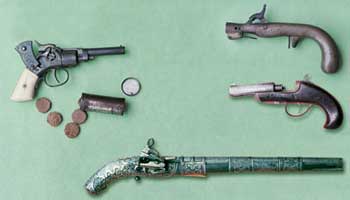 JM Davis and his remarkable gun collection
first came to my attention in the mid-1960s. Interesting as it certainly
would have been, the 500-mile trip from the campus in Colorado to the
Mason Hotel, where it was housed in Claremore, Oklahoma, was too far and
too expensive to make on a severely limited student’s budget. That was
especially so in light of the available modes of personal transport -
a horse or an Isetta 300 automobile. Both had about the same speed and
range, but the horse was the more reliable of the two.
JM Davis and his remarkable gun collection
first came to my attention in the mid-1960s. Interesting as it certainly
would have been, the 500-mile trip from the campus in Colorado to the
Mason Hotel, where it was housed in Claremore, Oklahoma, was too far and
too expensive to make on a severely limited student’s budget. That was
especially so in light of the available modes of personal transport -
a horse or an Isetta 300 automobile. Both had about the same speed and
range, but the horse was the more reliable of the two.
The years passed and an opportunity to go there simply didn’t materialise. Then, one day, a business trip brought me to within 50 miles of Claremore and there was enough time between other matters for a visit. It was well worth the effort.
Born in 1887, John Monroe Davis was raised by his parents on a plantation near Calion, Arkansas. When he was seven years old he became ill. As a reward for having taken his medicine without complaint, Davis’s father gave him a muzzleloading shotgun worth about $1.50. That doesn’t sound like very much in today’s economy, but it amounted to a good day’s wages for a grown man in 1894. That gift marked the beginning a lifelong fascination with firearms.
In early manhood, Davis began speculating in timberland and made some wise investments. In 1916 he traded about 2000 acres of Arkansas property for the Mason Hotel. A year later he moved into the place and took over its management. Eventually, he began displaying his firearm collection in the lobby, which, in turn, attracted the attention of visitors and guests.
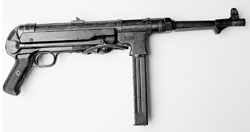 Davis’s interests weren’t limited to firearms.
Many items of a historical nature captured his attention. Knives, saddles,
music boxes, beer steins, American Indian artefacts and many other items
were added to the growing collection. It’s been said that he often traded
firearms and other valuables for lodging. Eventually, the lobby began
to get crowded and the hotel ballroom, the upstairs hallways and seven
private rooms of the establishment were filled. Davis and his collection
became well known and attracted collectors, traders and researchers from
around the country and overseas.
Davis’s interests weren’t limited to firearms.
Many items of a historical nature captured his attention. Knives, saddles,
music boxes, beer steins, American Indian artefacts and many other items
were added to the growing collection. It’s been said that he often traded
firearms and other valuables for lodging. Eventually, the lobby began
to get crowded and the hotel ballroom, the upstairs hallways and seven
private rooms of the establishment were filled. Davis and his collection
became well known and attracted collectors, traders and researchers from
around the country and overseas.
The Mason Hotel grew old along with its owner and was demolished years ago, to make way for new construction. The collection, however, is safely housed in a museum dedicated to its preservation just blocks from where its original owner had kept and cared for it during the course of his long lifetime.
In his last years, Davis prepared for the future by establishing the JM Davis Foundation, Inc and vesting ownership of his collection in the corporation. It, in turn, leased the entire collection to the state of Oklahoma for a term of 99 years, with an option to renew. The cost for acquiring the collection was the magnificent sum of one dollar. For its part, Oklahoma agreed to build a structure suitable to house and display the collection to the public.
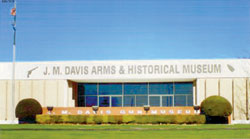 The JM Davis Arms & Historical Museum opened to the public on its benefactor’s 82nd birthday, June 27, 1969. Since that time it has been added to and now covers nearly an acre under one roof and the aisles devoted to displays of the firearms portion, alone, total nearly two kilometres in length.
The JM Davis Arms & Historical Museum opened to the public on its benefactor’s 82nd birthday, June 27, 1969. Since that time it has been added to and now covers nearly an acre under one roof and the aisles devoted to displays of the firearms portion, alone, total nearly two kilometres in length.
Representative examples from more than six centuries of firearm’s development are included in the display. Individual items range from the common commercial products of well-known manufacturers to the most exquisite renderings of the finest custom gunmakers of every historical period. From the Chinese hand cannons of the 14th century to modern military firearms of the latter half of the 20th century and from past possessions of ordinary folks to the guns of famous lawmen and infamous outlaws, the museum can satisfy the interests of any firearms researcher or hobbyist.
An area that attracts substantial interest is the gunsmith’s shop. It’s set up as one would have been in the late 1700s for the manufacture of Kentucky rifles. A video explains the process from beginning to end.
To do true justice to an examination of the JM Davis collection would require volumes. An article such as this can only touch on a few of the highlights. Through the courtesy of the museum’s staff we were permitted access to the displays and allowed to look at some special items in storage.
Upon entering the museum, visitors see portions of the original front lobby and registration desk of the Claremore Hotel. There, one pays a modest entry fee, then passes through a turnstile into a firearm enthusiast’s wonderland of treasures. The items on display are presented in well-lighted glass cabinets and clearly described as to make, model, calibre and, where appropriate, historical facts and anecdotes.
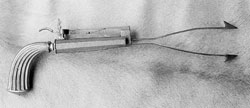 Firearms that were once the property of such
well-known American outlaws as Jesse James, ‘Pretty Boy’ Floyd and members
of the infamous Dalton Brothers Gang and many others are on display. One
of the more interesting, from the standpoint of good and evil, is the
.38-40 calibre Colt Single Action Army revolver that was given by the
notorious killer, John Wesley Hardin, to one of the most highly respected
lawmen of the Old West, Bill Tilghman.
Firearms that were once the property of such
well-known American outlaws as Jesse James, ‘Pretty Boy’ Floyd and members
of the infamous Dalton Brothers Gang and many others are on display. One
of the more interesting, from the standpoint of good and evil, is the
.38-40 calibre Colt Single Action Army revolver that was given by the
notorious killer, John Wesley Hardin, to one of the most highly respected
lawmen of the Old West, Bill Tilghman.
Examples of matchlock, wheel-lock, flintlock and caplock firearms, some plain and some exquisitely decorated, are in evidence. The entire progression of invention and innovation in the field of firearms development, from ancient to modern, is represented in plenitude.
Edged weapons are also much in evidence. They include all manner of swords, daggers, knives and bayonets. From the flint knives, spears, atlatls and arrows of stone-age peoples to the bronze weaponry of ancient Europe, Asia and Africa and from medieval times to modern, all manner of hunting and military blades are in evidence. Even more interesting, as far as innovation goes, are the combination weapons that blend swords and knives with firearms.
Vacations are usually a family event and it would be no surprise if some members were uninterested in the vast numbers of guns on display. Not to worry; there is something for everyone in this museum. There are collectable musical instruments and some exquisite music boxes. Recordings of the tunes they play can be heard by simply pressing appropriate buttons. Military uniforms and hundreds of artefacts of the American Civil War are there for the viewing. American Indian artefacts, including pottery, clothing, weapons, saddles and ceremonial items from many tribes are also displayed.
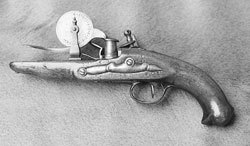 Oklahoma is in the heartland of the American west and the town of Claremore, and its surrounding area, has always been cattle country, so the tools and clothing of the working cowboy are well represented in this place.
Oklahoma is in the heartland of the American west and the town of Claremore, and its surrounding area, has always been cattle country, so the tools and clothing of the working cowboy are well represented in this place.
There seems to be a growing interest in the history of WWI these days. For those in pursuit of knowledge of that era, a collection of more than 600 patriotic and propaganda posters is available.
Another subject dear to the heart of many people is beer. The JM Davis Arms & Historical Museum is home to one of the finest collections of beer steins outside of Germany. Examples made of ceramic, glass, porcelain and pewter can be seen. They come in all sizes, shapes and levels of decoration. Even if you’re not interested in beer, the artistry is fascinating.
Davis was an avid collector of John Rogers statuary. Made from 1859 to 1893, the more than 80 different figure sets depicted in Rogers plaster sculptures captured moments of the everyday life of the period. They were widely admired and very popular decorative pieces in many thousands of homes. Today they are prized antiques.
If you happen to be travelling to the US for business or on holiday and are in that part of the country, be sure to make time for a visit. The JM Davis Arms & Historical Museum is a fascinating place with many items of interest to any visitor, but the firearms enthusiast will be enthralled.
